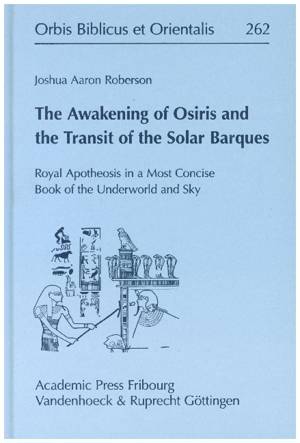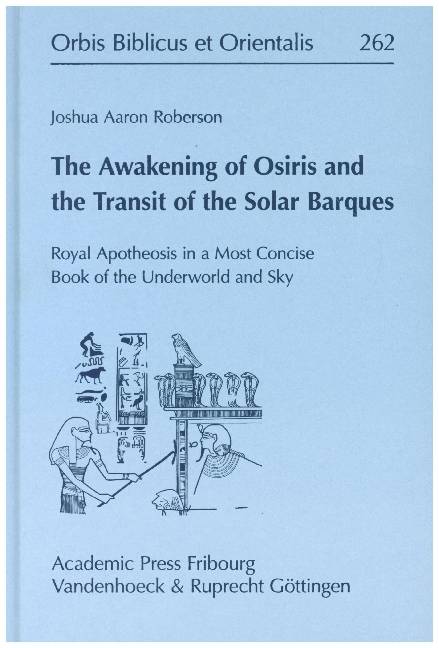
Bedankt voor het vertrouwen het afgelopen jaar! Om jou te bedanken bieden we GRATIS verzending (in België) aan op alles gedurende de hele maand januari.
- Afhalen na 1 uur in een winkel met voorraad
- In januari gratis thuislevering in België
- Ruim aanbod met 7 miljoen producten
Bedankt voor het vertrouwen het afgelopen jaar! Om jou te bedanken bieden we GRATIS verzending (in België) aan op alles gedurende de hele maand januari.
- Afhalen na 1 uur in een winkel met voorraad
- In januari gratis thuislevering in België
- Ruim aanbod met 7 miljoen producten
Zoeken
The Awakening of Osiris and the Transit of the Solar Barques
Royal Apotheosis in a Most Concise Book of the Underworld and Sky
Joshua Aaron Roberson
€ 65,33
+ 130 punten
Omschrijving
Among the many scenes and texts that occur for the first time in the Nineteenth Dynasty cenotaph of Seti I at Abydos is a representation of the awakening of Osiris by Horus, which appears directly beneath a vignette depicting the transit of the solar barques. The annotations to this bi-partite tableau appear in a mixture of standard, hieroglyphic Egyptian and cryptographic scripts. Similar groups of scenes and texts occur in the Twentieth Dynasty royal tombs of Ramesses VI (KV9) and Ramesses IX (KV6), the Twenty-Second Dynasty tomb of Sheshonq III at Tanis (NRT5), and the Twenty-Sixth Dynasty private tomb of Mutirdis at Thebes (TT410). In addition, significant, albeit partial parallels occur on the re-carved, Twenty-Second Dynasty sarcophagus of Psusennes and a Ptolemaic sarcophagus inscribed for a certain Khaf. This study offers a summary of the scenes iconography together with the first synoptic edition of the relevant annotations, taking into account all currently published exemplars. Many of the cryptographic texts are translated here for the first time, while others receive updated translations and expanded analyses. The author also considers the meaning and context of the paired scenes in royal and private monuments, in order to demonstrate the status of the bi-partite tableau as a unified composition. This composition is identified as a concise representative of the cosmological genre referred to usually as the Books of the Underworld and Sky.
Specificaties
Betrokkenen
- Auteur(s):
- Uitgeverij:
Inhoud
- Aantal bladzijden:
- 182
- Taal:
- Engels
- Reeks:
- Reeksnummer:
- nr. 262
Eigenschappen
- Productcode (EAN):
- 9783525543870
- Verschijningsdatum:
- 20/11/2013
- Uitvoering:
- Hardcover
- Formaat:
- Genaaid
- Afmetingen:
- 160 mm x 237 mm
- Gewicht:
- 139 g

Alleen bij Standaard Boekhandel
+ 130 punten op je klantenkaart van Standaard Boekhandel
Beoordelingen
We publiceren alleen reviews die voldoen aan de voorwaarden voor reviews. Bekijk onze voorwaarden voor reviews.









